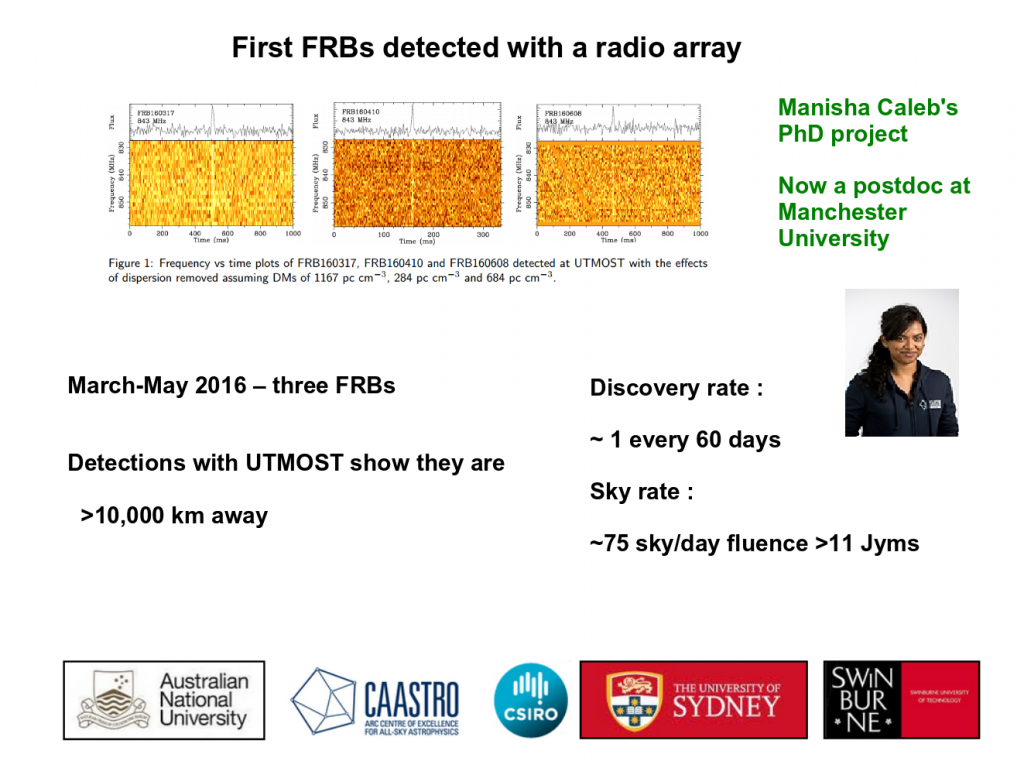
2013-2017Manisha Caleb
Manisha found the first ever FRBs with a telescope array and first determination of the FRB rate at 843 MHz. Manisha’s first postdoc position was at the University of Manchester, working on the MeerKAT FRB search project, and she is now at the University of Sydney.
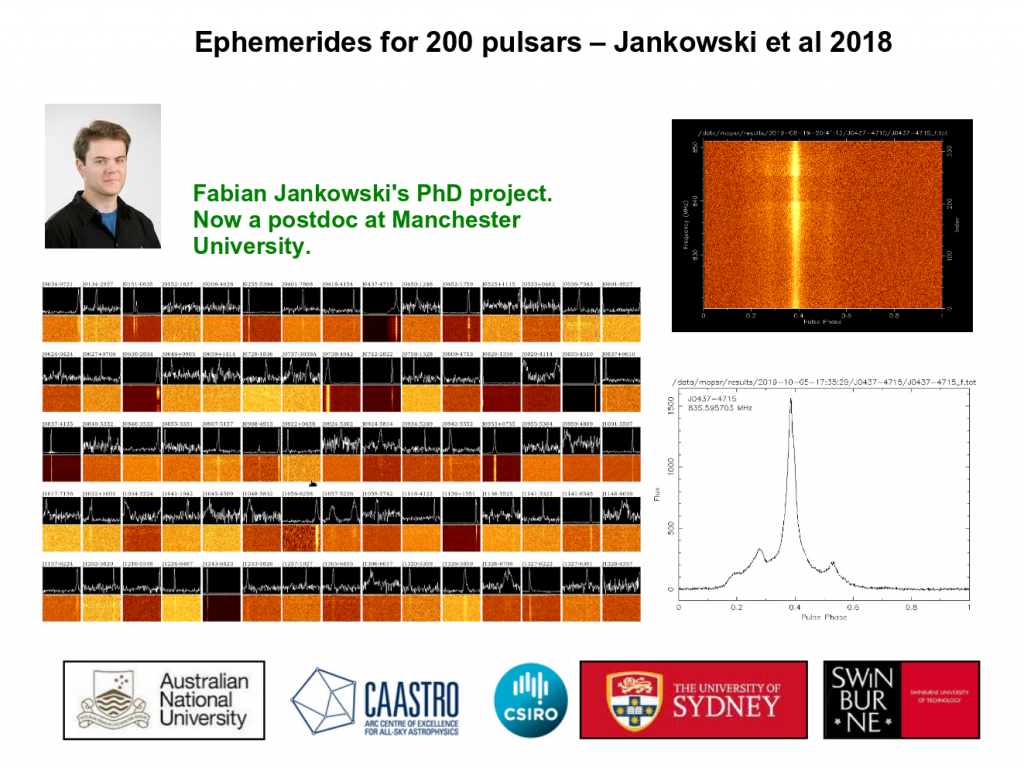
2013-2018
Fabian Jankowski
Fabian developed the UTMOST pulsar timing program from scratch to the regular timing of more than 400 pulsars during his PhD. Fabian is now at the University of Manchester, working on the MeerKAT FRB search project.
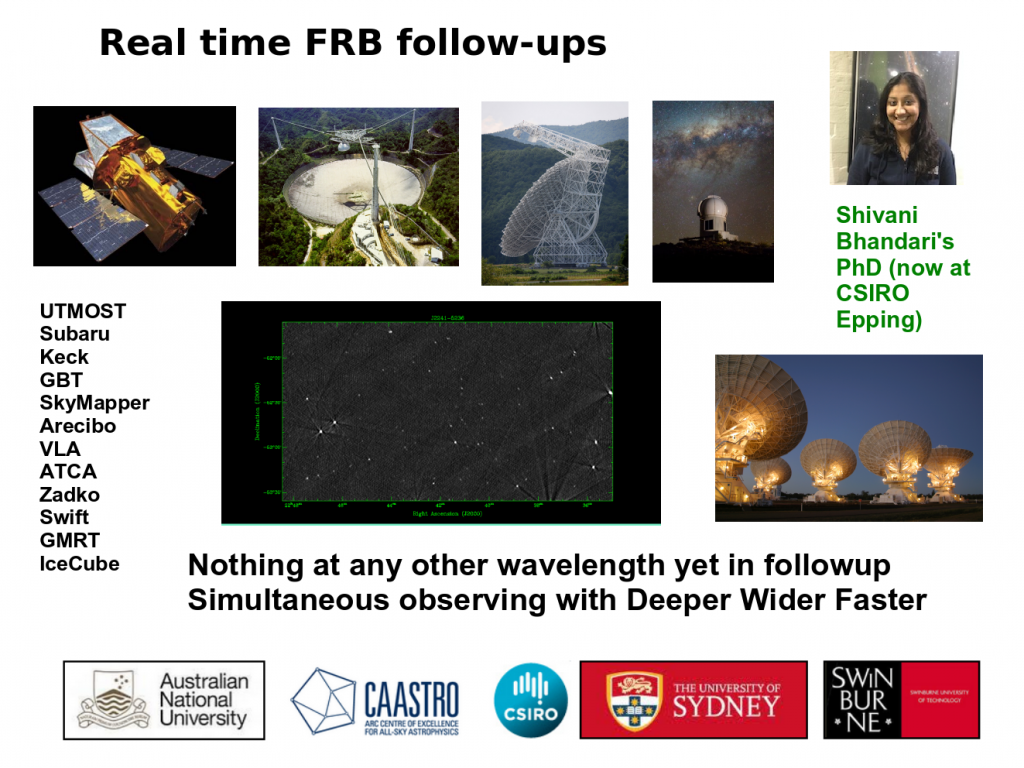
2014-2018
Shivani Bhandari
Shivani did extensive multiwavelength/ multimessenger followup of FRBs at Parkes and at UTMOST, and published a revised rate for FRBs at 1.4 GHz from the SUPERB survey. Her first postdoc position was at CSIRO Marsfield, working on the ASKAP/CRAFT’s FRB localisation program, and she is now working at ASTRON in the Netherlands, where she is a Veni Fellow.
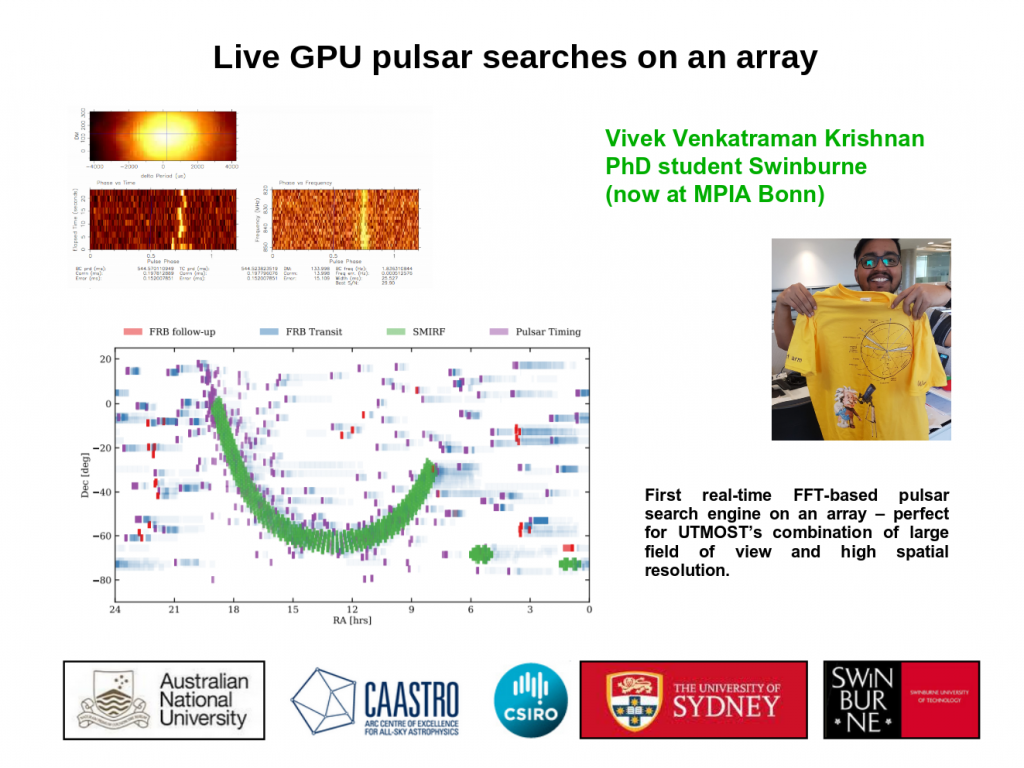
2014-2018
Vivek Venkatraman Krishnan
Vivek built a state-of-the-art real-time pulsar search program running for the first time ever on a radio telescope array. He used it to time some particular interesting pulsars for new tests of General Relativity. Vivek is now working at MPI/Bonn on pulsars and GR.
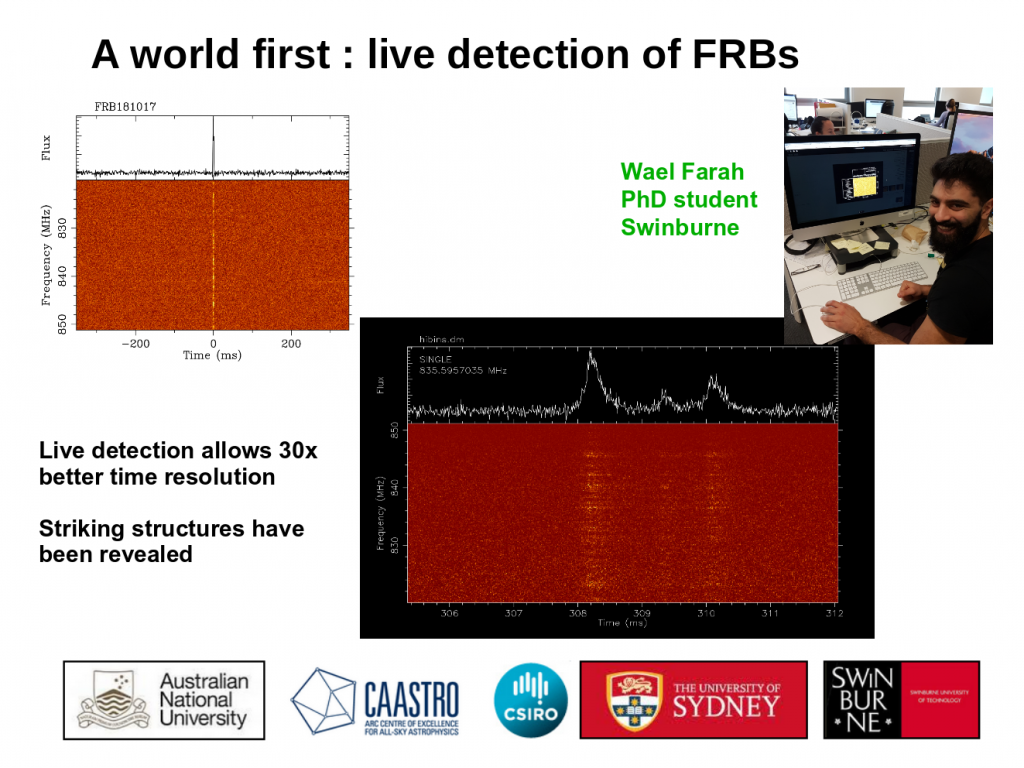
2016-2020
Wael Farah
Wael built the world’s first machine-learning based, automated FRB triggering program and used it to obtain remarkable time and frequency resolution of his FRBs. His system revealed hitherto unsuspected structure in FRBs in time and frequency. Expected completion early-2020, he has accepted a job with the Allen Array / SETI Institute.
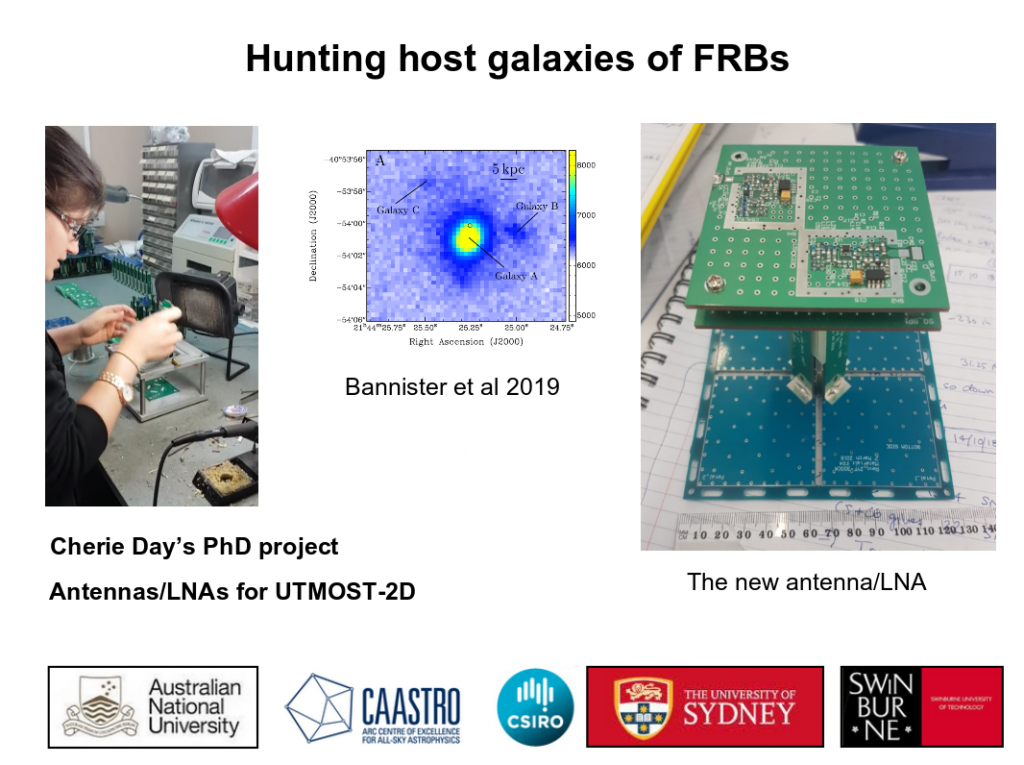
2017-2022
Cherie Day
Cherie designed the antenna/LNA detection system for UTMOST-2D, an improvement which will bring host galaxy localisation to our FRB science. The antennas were installed into the UTMOST-2D system and has been timing pulsars since 2021, and also detected one of the brightest FRBs ever seen. Cherie is now working at McGill Space Institute.
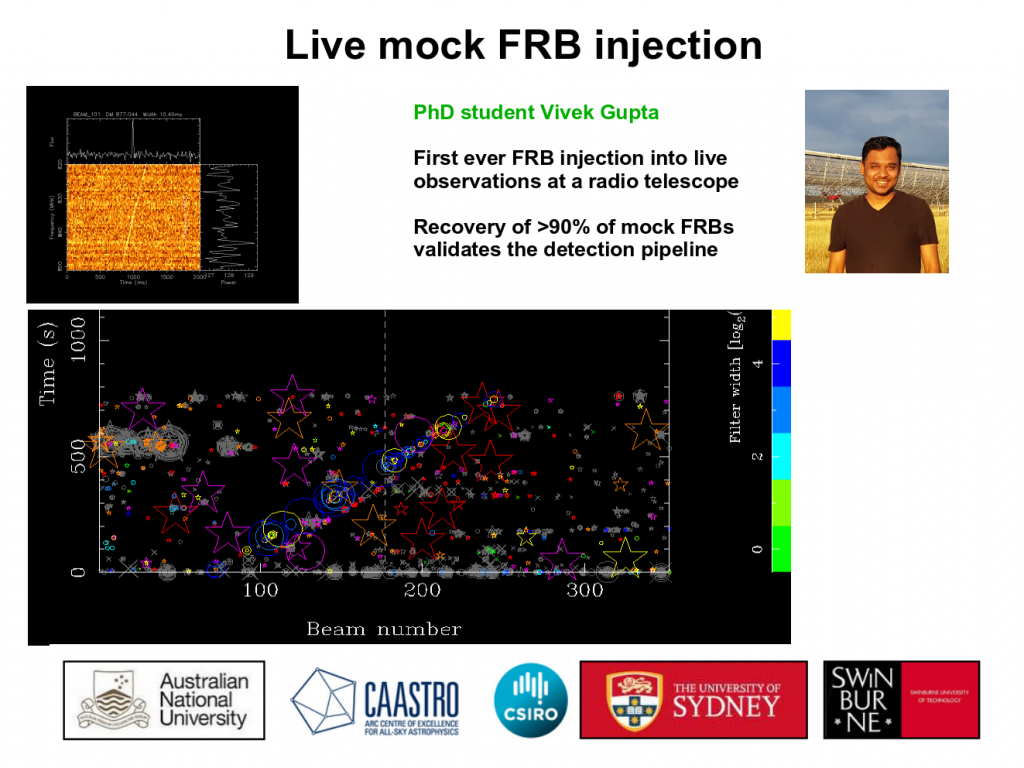
2017-2022
Vivek Gupta
Vivek worked on UTMOST-2D development, including the localisation of pulsar pulses, the injection of mock FRBs into our pipelines, automated triggering of FRBs to external facilities, and FRB detections with UTMOST-2D. He did a major study of scattering in FRBs, as Molonglo’s very high time resolution and data triggering system allowed him to create a state-of-the art sample to do so. Vivek is now as postdoc working at CSIRO on the CRACO project to detect and localise FRBs using ASKAP.
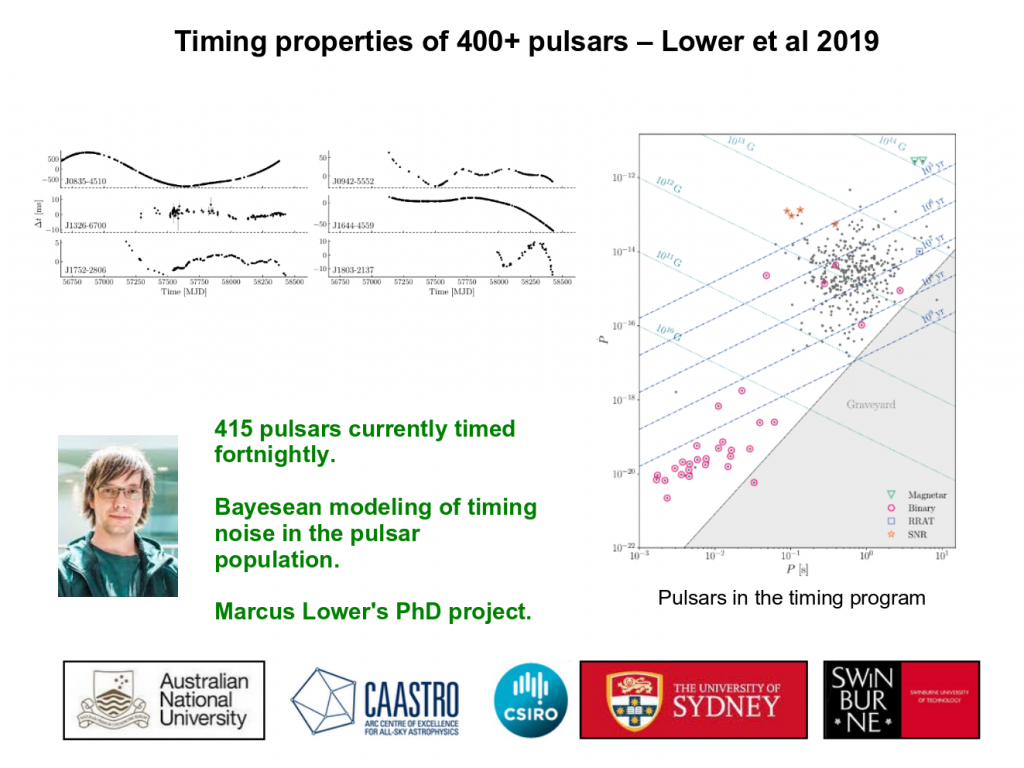
2018-2022
Marcus Lower
Marcus is operating the UTMOST pulsar timing program — and has extended its regular automated timing to more than 400 pulsars every few weeks. He is interested in the pulsar population properties as revealed by timing, and pulse structure in magnetars. Marcus is now a postdoc at CASS/CSIRO in Sydney Australia.
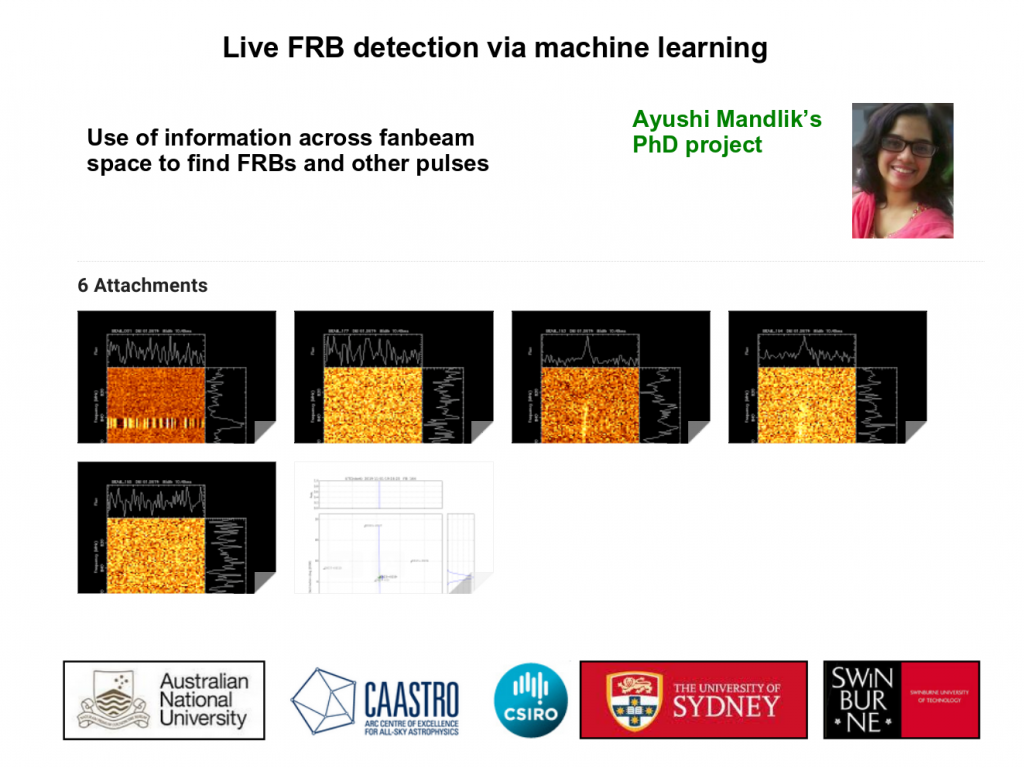
2019-2023
Ayushi Mandlik
Ayushi is working on machine learning algorithms for live FRB detection with the revamped North-South arm of the Molonglo telescope.